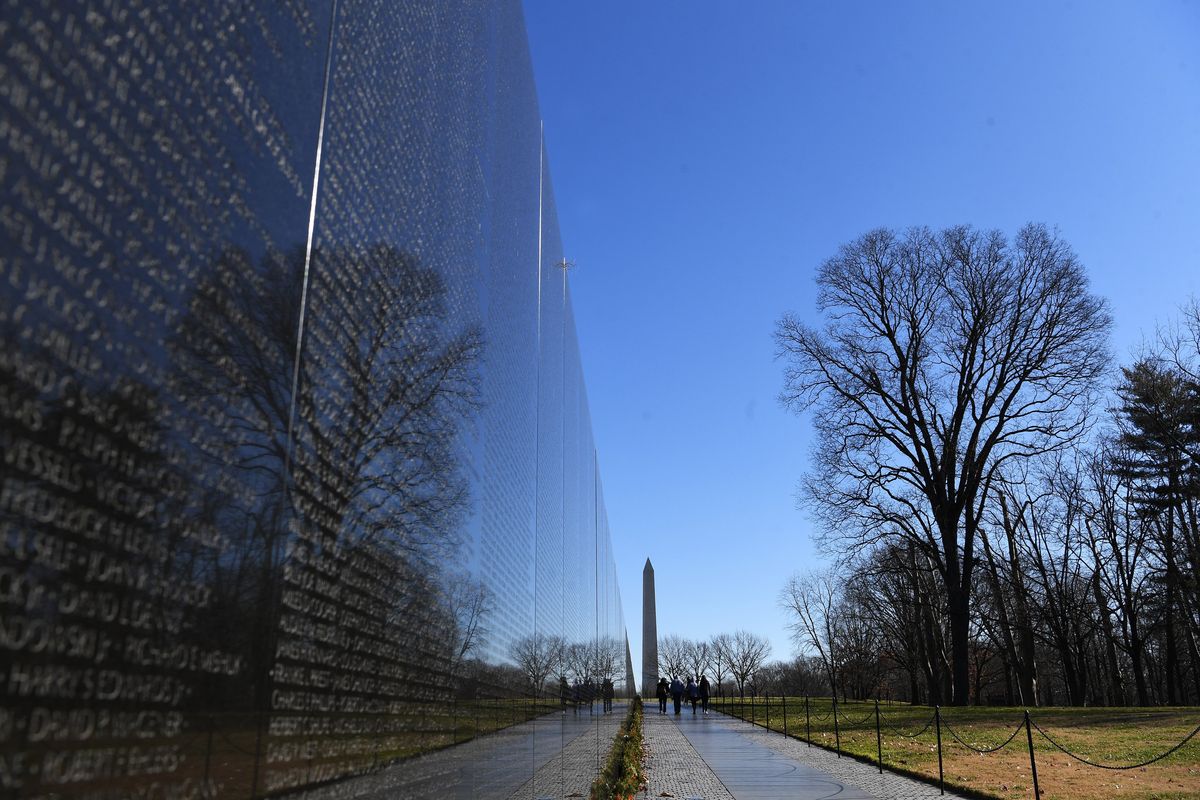Vietnam Veterans Memorial, once criticized, gained respect in 40 years

It was the dream of a 29-year-old Army veteran, brought to life by a 21-year-old architecture student at Yale University. Jan Scruggs, born and raised in Bowie, Maryland, and Maya Lin, the daughter of Chinese immigrants, had never met. But their names became forever linked in 1981 when judges chose Lin’s simple yet elegant design for the Vietnam Veterans Memorial to be built on the National Mall in Washington, D.C.
That memorial – 144 panels of polished black granite at the Mall’s west end – is 40 years old this week. Events marking the occasion include the reading, over four days, of the more-than-58,000 names chiseled into its stone face. Each one honors an American service member who died in the Vietnam War or was missing in Southeast Asia from 1959 to 1975, the years inscribed on the wall.
Since its dedication in 1982, more than 300 names have been added, including some men who died before 1959. The names of eight female nurses also are carved into the V-shaped memorial.
Each year more than 5 million people visit it, their images reflected off the shiny surface. Many leave flags, flowers, medals, old letters, photos and other mementos of their lost sons, husbands or friends. A scuffed-up baseball was left at the base of one panel, a Hot Wheels car at another.
The tributes are so touching that even visitors with no personal connection to the site shed tears. National Park Service rangers regularly collect these objects and store many of them. (You can view some at vvmf.org/items.)
Younger visitors may not know that, as originally drawn, the memorial’s design was as unpopular with some people as the war – a regional conflict that pitted North Vietnam and its communist allies against South Vietnam and its main ally, the United States.
About 2.7 million American men and women served in Vietnam; over time, the mounting casualties ignited large antiwar protests in the United States. Unlike previous wars, there were no big victory parades welcoming these veterans home. (The last U.S. combat forces left South Vietnam in 1973. In 1976, after the collapse of the South Vietnamese government, the country was reunited under communist rule. Today it is a major trade partner of the United States.)
Scruggs was badly wounded in Vietnam and later suffered flashbacks to a 1970 incident in which 12 of his comrades were killed. After the war, he pushed for a memorial to honor all who served. At the memorial’s 1982 dedication, Scruggs said he hoped the memorial would “begin the healing process and forever stand as a symbol of our national unity.”
Lin’s design was one of 1,421 submitted (and judged) anonymously in a nationwide competition. Her concept was minimal but powerful to some. Scruggs called it “excitingly different.”
But critics pounced on it as unpatriotic. It reminded some veterans of the disrespect they received coming home from the war. These critics attacked everything from the memorial’s design (to them, it looked like a gash or gaping wound) to its placement (sunk into the ground, suggesting shame) to its color (why was it black when other monuments in the city are white?). And why was no American flag or heroic sculpture included?
Eventually, a compromise was reached. In 1984, a U.S. flag and a statue of three servicemen were added near the wall. Nine years later, a sculpture of three nurses aiding a wounded soldier was added.
The changes helped soften the criticism, which faded over the years. Today the memorial is among the most-visited sites in Washington. To Scruggs and many others, it means “these guys … didn’t die for nothing.”